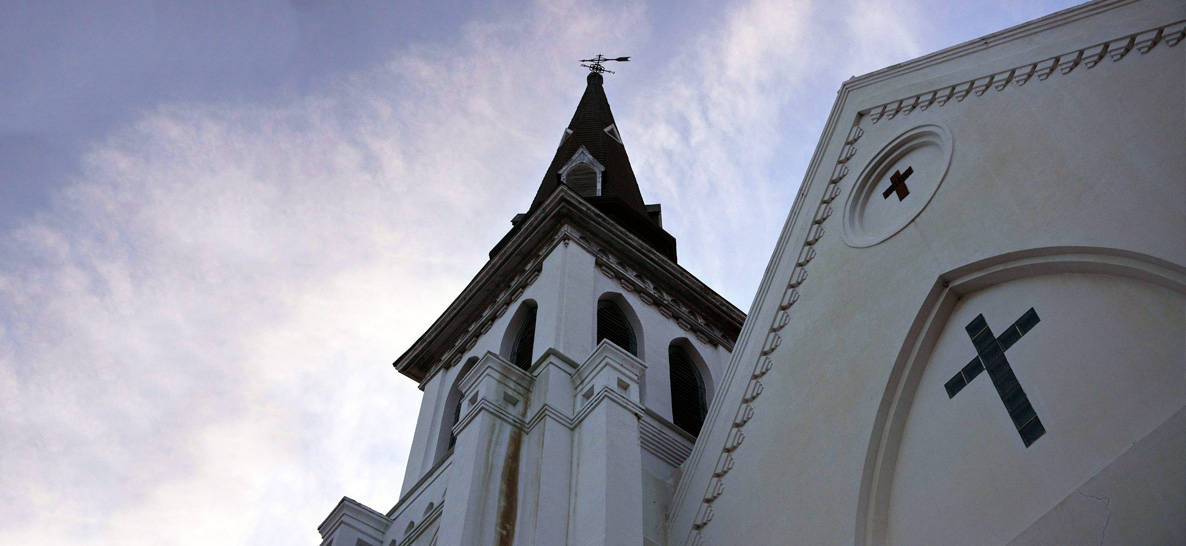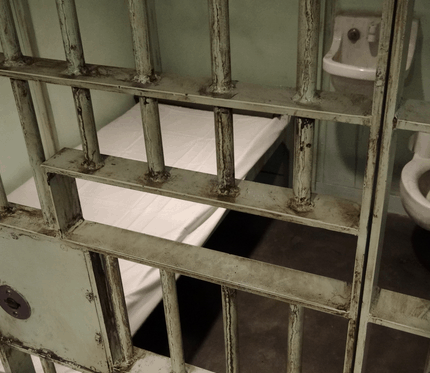
On Wednesday night, a gunman walked into a Bible study at Emanuel African Methodist Episcopal Church in Charleston, South Carolina and killed nine people and injured at least one. The suspect, a 21-year-old white man named Dylann Roof, reportedly told victims he was there “to shoot black people.”
Sadly, the shooting isn’t the first time the congregation of the historic church has faced a senseless tragedy.
The history of Emanuel AME Church is long and linked with the struggle for civil rights in America. It has been shut down for teaching slaves to read and write, burned to the ground after a failed slave revolt in Charleston and forced underground during the Civil War.
But the affectionately nicknamed “Mother Emanuel” also persevered in the face of such tremendous adversity, over and over again. It played a prominent role in the civil rights movement of the 1960s, supporting the Charleston Movement and leaders like Martin Luther King Jr.
Here are six moments in the history of Emanuel AME Church when the church at the heart of the black community in Charleston intertwined with the heart of America’s struggle for civil rights.
1. Emanuel is One of the Oldest Black Congregations in the South
In 1816, members of Charleston’s Methodist Episcopal church who were black left the church over “disputed burial ground,” according to Emanuel’s website. Author and Le Moyne College Professor Douglas Egerton elaborated in New Republic:
White church members had planned to build a hearse shed—a garage, basically—on top of a black cemetery. The members who left formed several churches under Rev. Morris Brown and the Free African Society, a precursor to the African Methodist Episcopal denomination, according to the church. Emanuel’s congregation grew out of one of those churches.
That makes it the first African Methodist Episcopal church in the South, according to the Post and Courier. And it remains the oldest.
2. The Church was Burned After a Failed Slave Revolt
Among the founding members of the church was Denmark Vesey, who purchased his own freedom and later planned a major slave revolt, according to NPR’s “Code Switch.” But authorities learned of the rebellion planned for June 16, 1822. Afterward, the church was burned down, and Vesey and 34 others were executed, according to The Atlantic. Another 60 people were banished from the city, and the church’s two ministers were exiled.
The church was destroyed a second time by an earthquake in 1866, and its reconstruction completed in 1874.
3. Church Members Met in Secret When All-Black Churches were Outlawed
After the failed revolt in Charleston, South Carolina, outlawed church services held without a white person present, according to the Washington Post.
But church members not only continued to worship together underground, they also worked as part of the Underground Railroad, the newspaper reported. When the church reorganized in 1865 at the end of the Civil War, it took the name “Emanuel,” meaning, “God with us.”
4. The Church was the Unofficial Headquarters of the Charleston Movement
The 1963 Charleston Movement was a peaceful protest of businesses segregated by the Jim Crow laws of the South, unfair wages and limited employment opportunities, according to the Carolina Lowcountry and Atlantic World Program.
And Emanuel was the unofficial headquarters of the movement. The church organized boycotts and became the starting point for marches. It even hosted services remembering the four children killed in the bombing of 16th Street Baptist Church in Birmingham, Alabama, a reminder of the long and grievous history of attacks on black churches that now includes Wednesday’s mass shooting.
5. Prominent Civil Rights Activists, Including Martin Luther King Jr., Visited the Church
Not only have Emanuel’s members worked tirelessly throughout its history to end slavery, segregation and racism, but also they have welcomed other prominent civil rights activists to the church.
Booker T. Washington brought a crowd of white supporters to the church as far back as 1909, according to the Huffington Post. Both Martin Luther King Jr., and NAACP Executive Secretary Roy Wilkins spoke at the church in 1962, urging residents to register and vote. And Coretta Scott King led a march past 1,000 National Guardsmen to the steps of the church in to support striking hospital workers in 1969.
6. Its Late Pastor, Clementa C. Pinckney, was a State Senator and Activist
The late Rev. Clementa C. Pinckney not only pastored Emanuel since 2010, but also served in the South Carolina State Legislature since 1996. Pinckney answered the call to preach at age 13, received his first appointment as pastor at 18 and became the youngest African-American elected in South Carolina at 23.
The state senator had supported a bill requiring police officers to wear body cameras after video surfaced earlier this year of a white police officer in North Charleston shooting an unarmed black man named Walter Scott as he tried to flee.
He was one of nine people killed when a gunman opened fire Wednesday at the church Bible study.






















